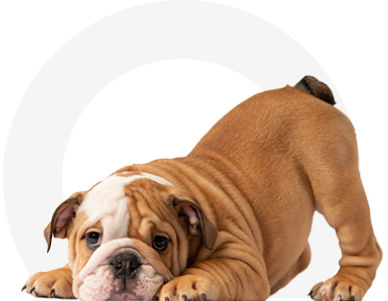Stem Cell Therapy for Degenerative Myelopathy in Dogs

Stem Cell Therapy for Degenerative Myelopathy in dogs: Treating Degenerative myelopathy in dogs with Stem Cell Therapy in house and cryobanking offered by Dr. Kraemer
Stem Cell Therapy for Degenerative Myelopathy in Dogs is showing encoring evidence in slowing the progression of this tragic neurological condition and possibly even reversing it. Degenerative myelopathy in dogs also known as chronic degenerative radiculomyelopathy, is a rare slow, progressive spinal cord disorder of unknown cause that is most commonly seen in aging German shepherds and a few other large breeds of dogs such as Belgian shepherds, Rhodesian ridgebacks, standard poodle, Boxer, and rarely bulldogs. The high incidence in German shepherds suggests a genetic basis for the disease. Most dogs deteriorate over the course of a few months to a year and are eventually euthanized.
The cause of degenerative myelopathy in dogs is unknown (i.e. idiopathic), although it is believed to be an autoimmune-mediated disease, a condition in which the body’s immune system begins to attack its own nerve cells. The age of onset in German Shepherd, bulldogs, and other breeds is 5 to 14 years, with an average age of 10 years old. Male dogs are affected more than females. The high incidence in German shepherds suggests a genetic basis for the disease.
Degenerative Myelopathy in German shepherd and other breeds is slowly progressive. Affected dogs get progressively weaker usually in the hind and more uncoordinated as the disease process progresses. Most dog’s neurological conditions will progress over 4 to 6 months from the time of initial diagnosis.
Common neurological deficiencies are seen in Degenerative Myelopathy in pets:
- Progressive weakness of the hind limbs
- Dragging legs and paws
- Difficulty rising and Jumping
- Stumbling and Knuckling of the toes
- muscle atrophy in the rear legs
- shaking of rear legs`
- urinary and fecal incontinence
- In some cases, in the late stages, the front legs can be affected
Degenerative Myelopathy should be suspected in any middle aged German shepherd with progressive weakness and loss of strength and coordination in the rear legs. Tests should be done in order to rule out other diseases like hip dysplasia, disc disease, cancer and other degenerative conditions who might exhibit similar clinical symptoms.
Dr. Kraemer’s Stem Cell Therapy for Degenerative Myelopathy in dogs Tip #1: A complete neurologic examination should be done in the diagnosing process of degenerative myelopathy. and x-rays should be taken to rule out orthopedic problems that may have similar signs. More advanced imaging like CT and MRI might be recommended.
Dr. Kraemer’s Stem Cell Therapy for Degenerative Myelopathy in dogs Tip Tip #2: More advanced tests like contrast radiographs and spinal tap might be necessary to rule out other causes of progressive weakness and loss of coordination. Many dogs with degenerative myelopathy spinal tap results will show an increased protein concentration in the spinal fluid.
Dr. Kraemer’s Stem Cell Therapy for Degenerative Myelopathy in dogs Tip Tip #3: We now offer DNA testing for degenerative myelopathy for both German shepherds as well as another breed. This DNA testing is an accurate, convenient, and affordable test to help breeders avoid producing dogs who have a high DM marker and at risk to their offspring. DDC Veterinary’s DNA test reveals one of the 3 possible genotypes for degenerative myelopathy:
• CLEAR (those having 2 copies of the normal allele and appear to be normal).
• CARRIER (those having 1 copy of the normal allele and 1 copy of the mutation and most appear to be normal).
• AT RISK (those having 2 copies of the mutation and will likely show clinical signs.)
Dr. Kraemer’s Stem Cell Therapy for Degenerative Myelopathy in dogs Tip #4: A few treatments have been recommended, of which the most promising are regenerative medicine therapies such as stem cell therapy. Yet no good controlled studies have been performed so far,
Dr. Kraemer’s Stem Cell Therapy for Degenerative Myelopathy in dogs Tip #5: Dr. Kraemer offers in-house, same-day state-of-the-art stem cell therapy. Dr. Kraemer’s stem cell therapy is a patented in-house treatment, the harvesting, extracting, activating, and injecting are all done within hours from the patient’s arrival. For Degenerative Myelopathy patients, the injections are typically given IV, Intrathecal (subarachnoid space), and also to the lumbar muscles at the acupuncture points. Dr. Kraemer also will cryobank a portion of the stem cell for at least two additional treatments on days 30 and 60. For Degenerative Myelopathy patients, the cryobanking is at a reduced fee (compassionate case)
Dr. Kraemer’s Stem Cell Therapy for Degenerative Myelopathy in dogs Tip #6: Dr. Kraemer also offers other low-cost non-pharmaceutical therapeutic modalities like Pulse Electromagnetic Therapy (PEMT). PEMT is can be done by the pet owners at home as a low-cost alternative or as a complementing therapy with other treatments. Dr. Kraemer also offers in-house class 4 Cold Laser Therapy for pets suffering from Degenerative Myelopathy.
Dr. Kraemer’s Stem Cell Therapy for Degenerative Myelopathy in dogs Tip #7: Other traditional medications offered for Degenerative Myelopathy pets are usually Glucocorticoids and NSAID’s
Dr. Kraemer also recommends:
- Special homemade diet: special diets should be implemented when treating pets with Degenerative Myopathy
- Physical therapy: is an important part of supporting pets with Degenerative Myopathy
- Vitamin and Supplements such as Vitamin E, Vitamin B complex, Vitamin C, Selenium and others like tonic herb can help pets suffering from Degenerative Myopathy
- N-acetyl cysteine and Aminocaproic Acid: a potent anti-oxidant, when given along with aminocaproic acid, has been suggested as part of a therapeutic regimen for Degenerative Myopathy.
- Exercise: exercise for Degenerative Myopathy appears to be helpful in delaying the progression of the disease in German shepherds and other breeds. Dogs should be placed on an increasing, alternate-day exercise program including walking and swimming
- Home care: Home Care for Degenerative Myopathy in pets includes making sure your pet is clean and dry when urinary and fecal incontinence occur to prevent urine scald and skin infections/ulcerations. It is also important to provide proper walking surfaces that allow your pet to have good foot traction. Padded bedding that can be easily cleaned is also ideal. Dogs with advanced disease can sometimes benefit from a “sling” to help them ambulate. Slings can be purchased or might at home






